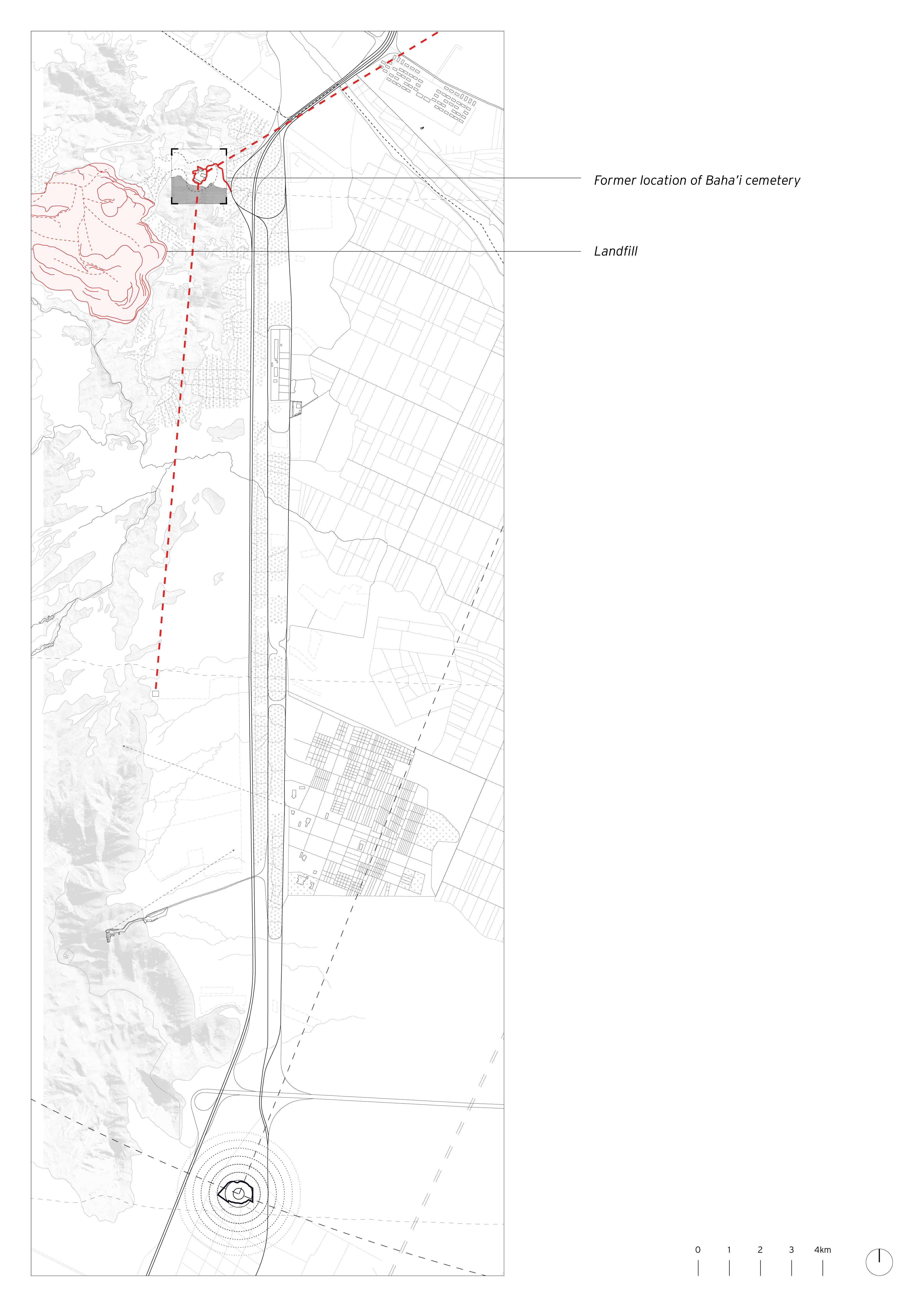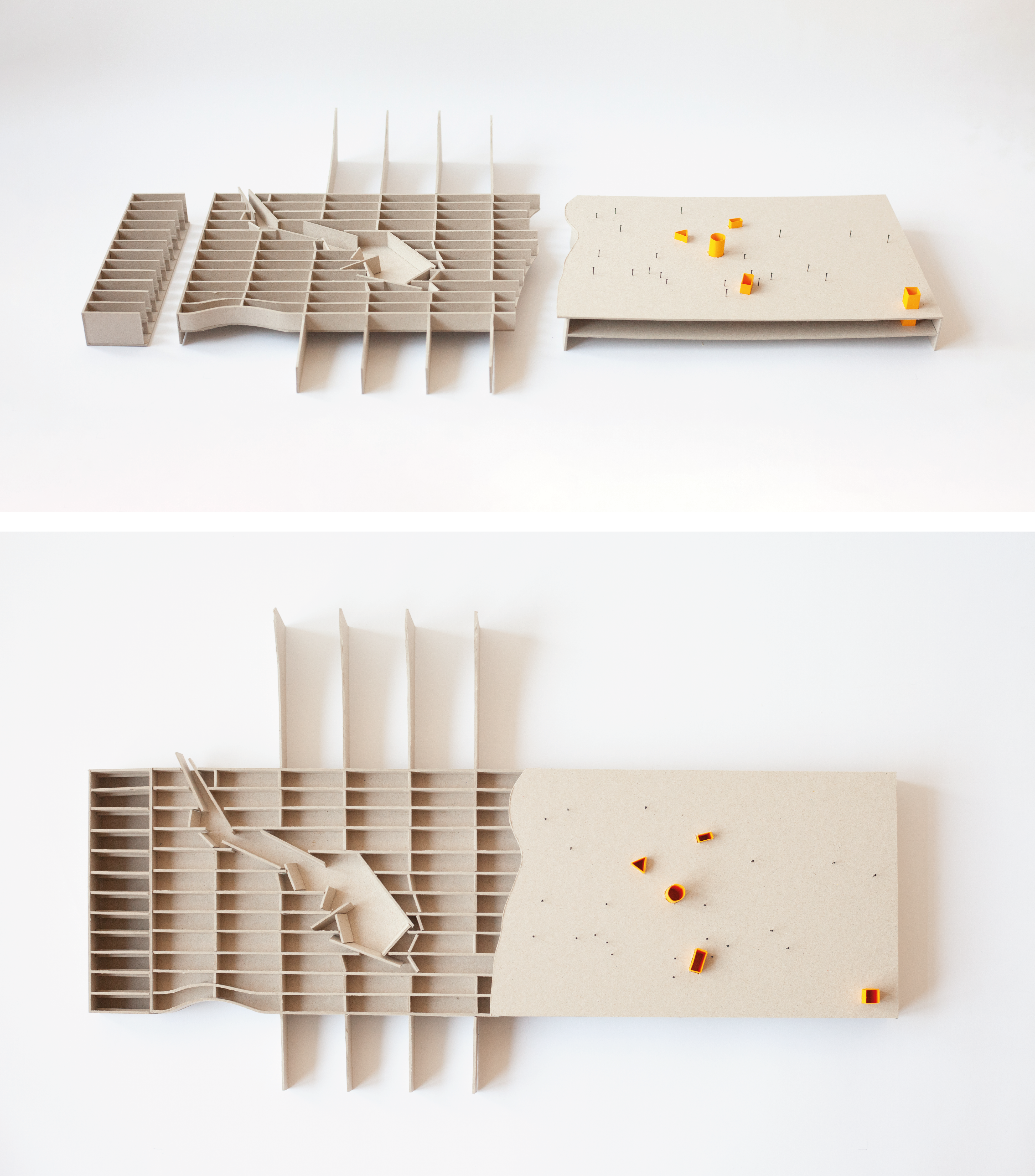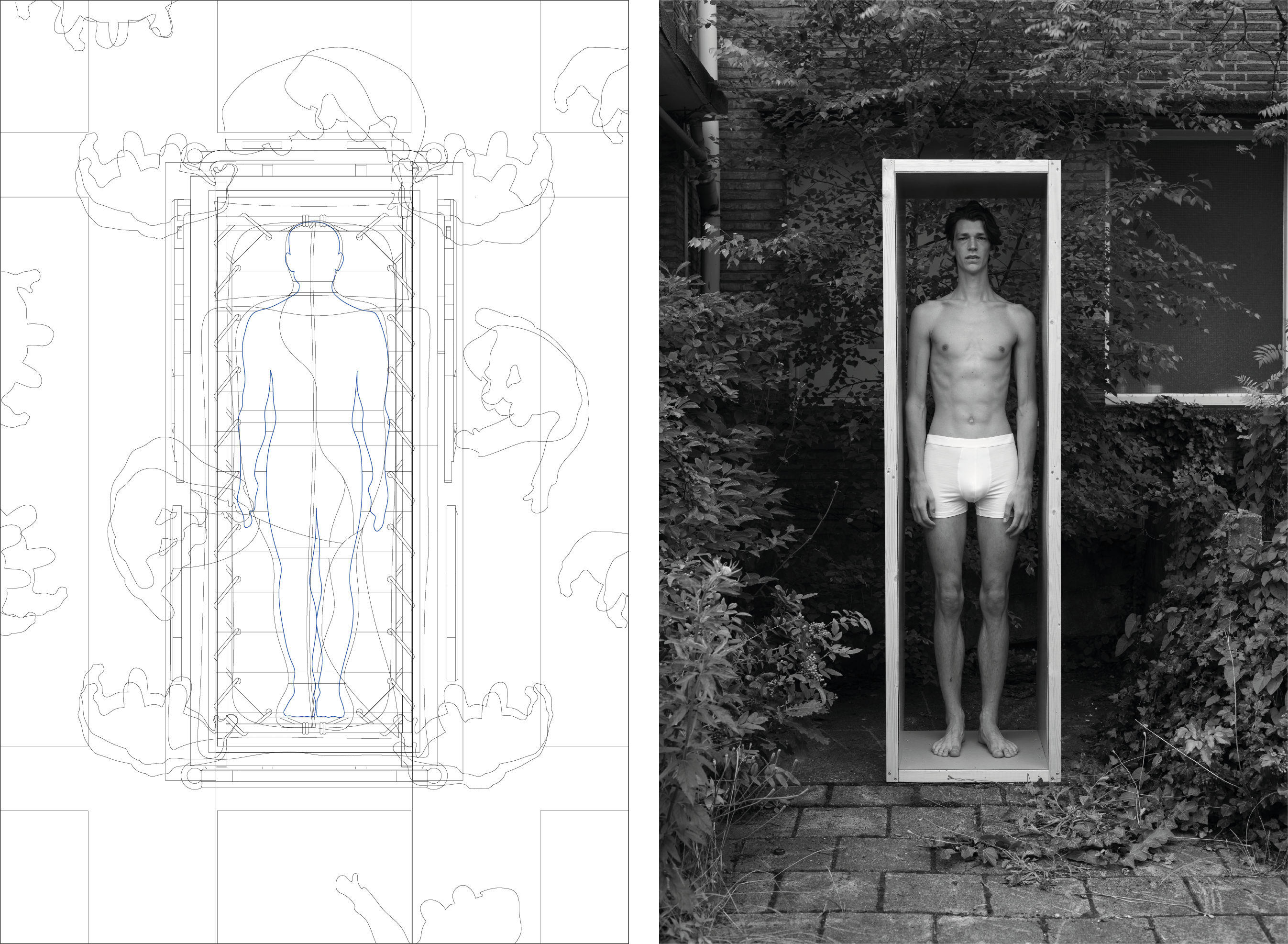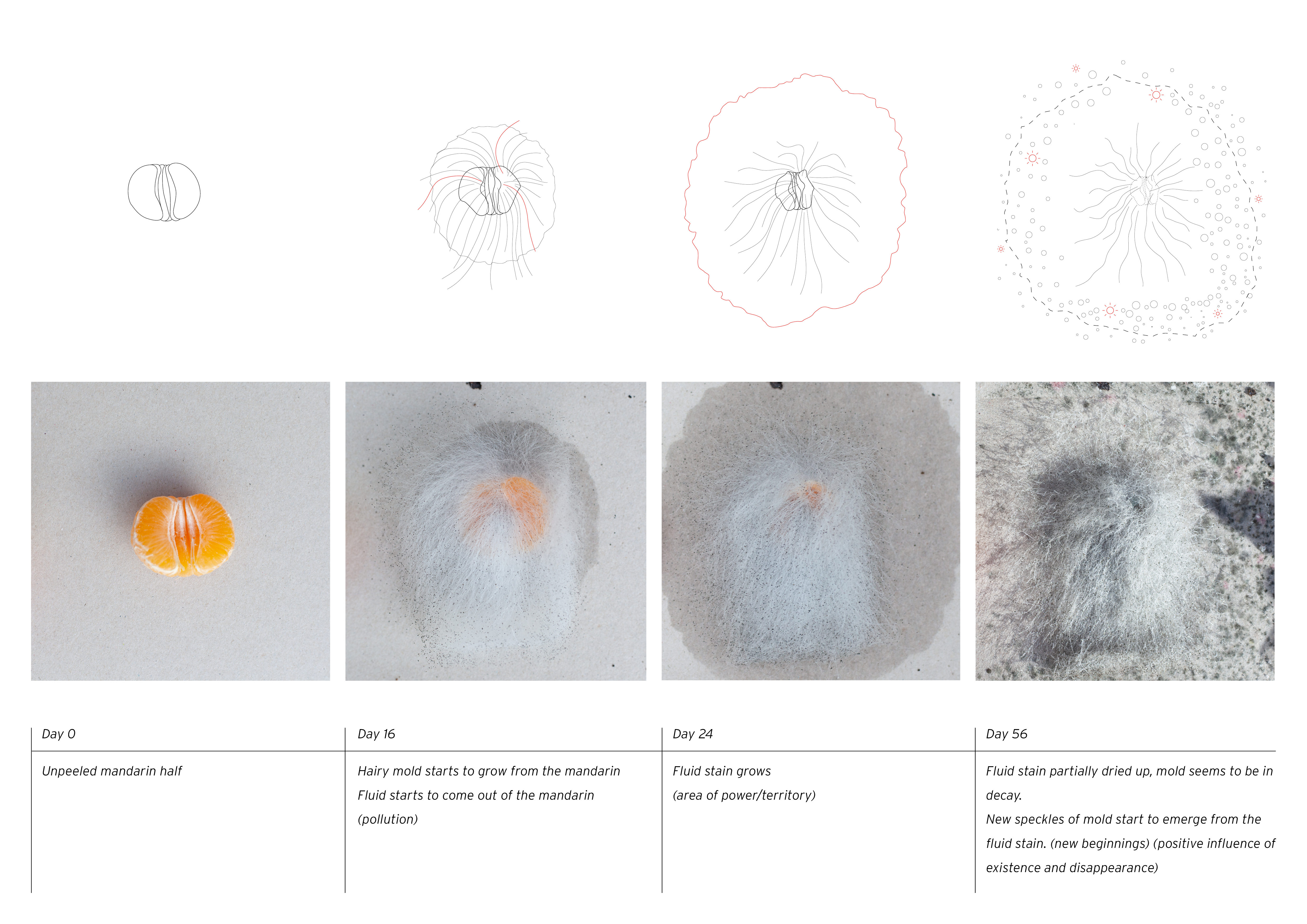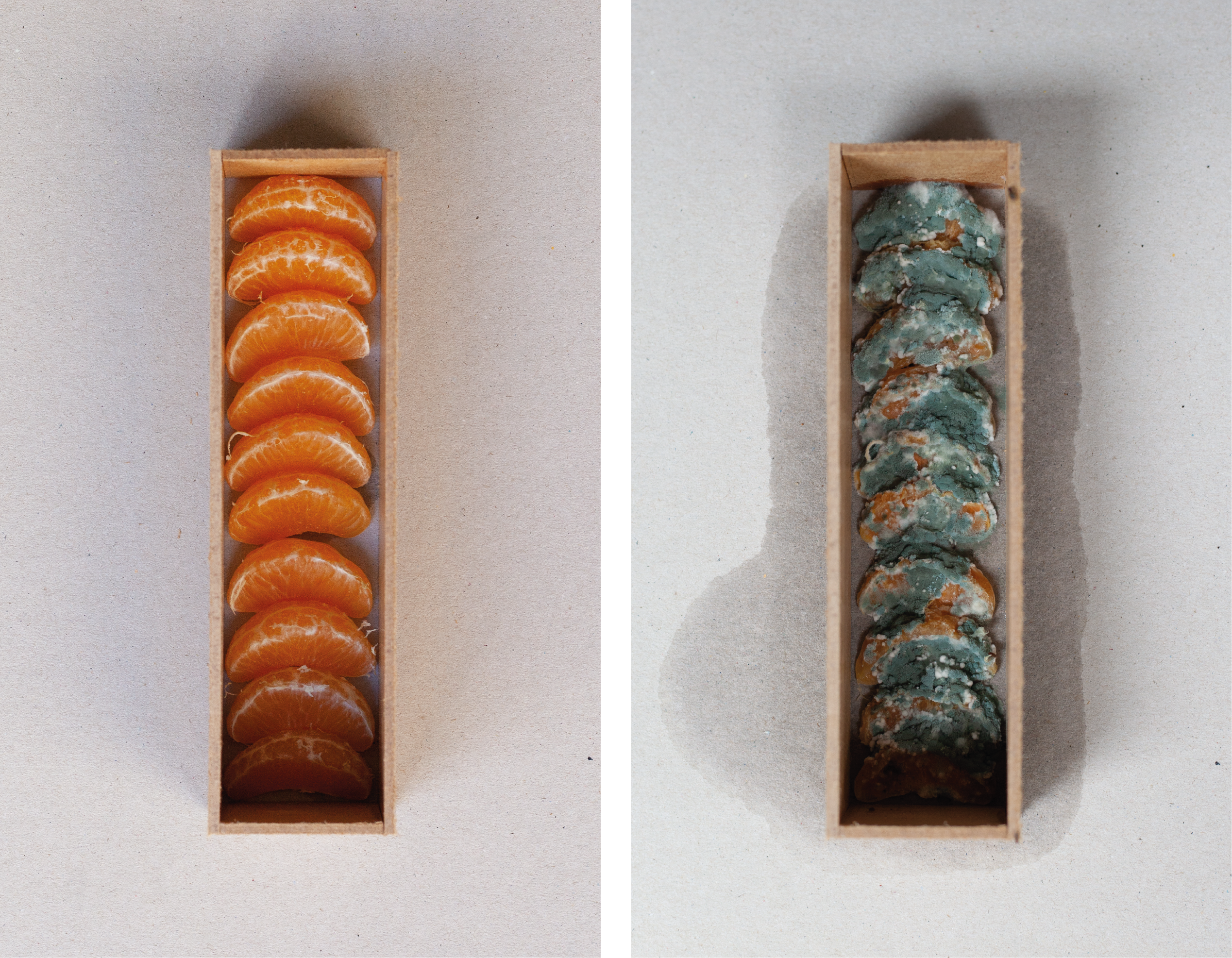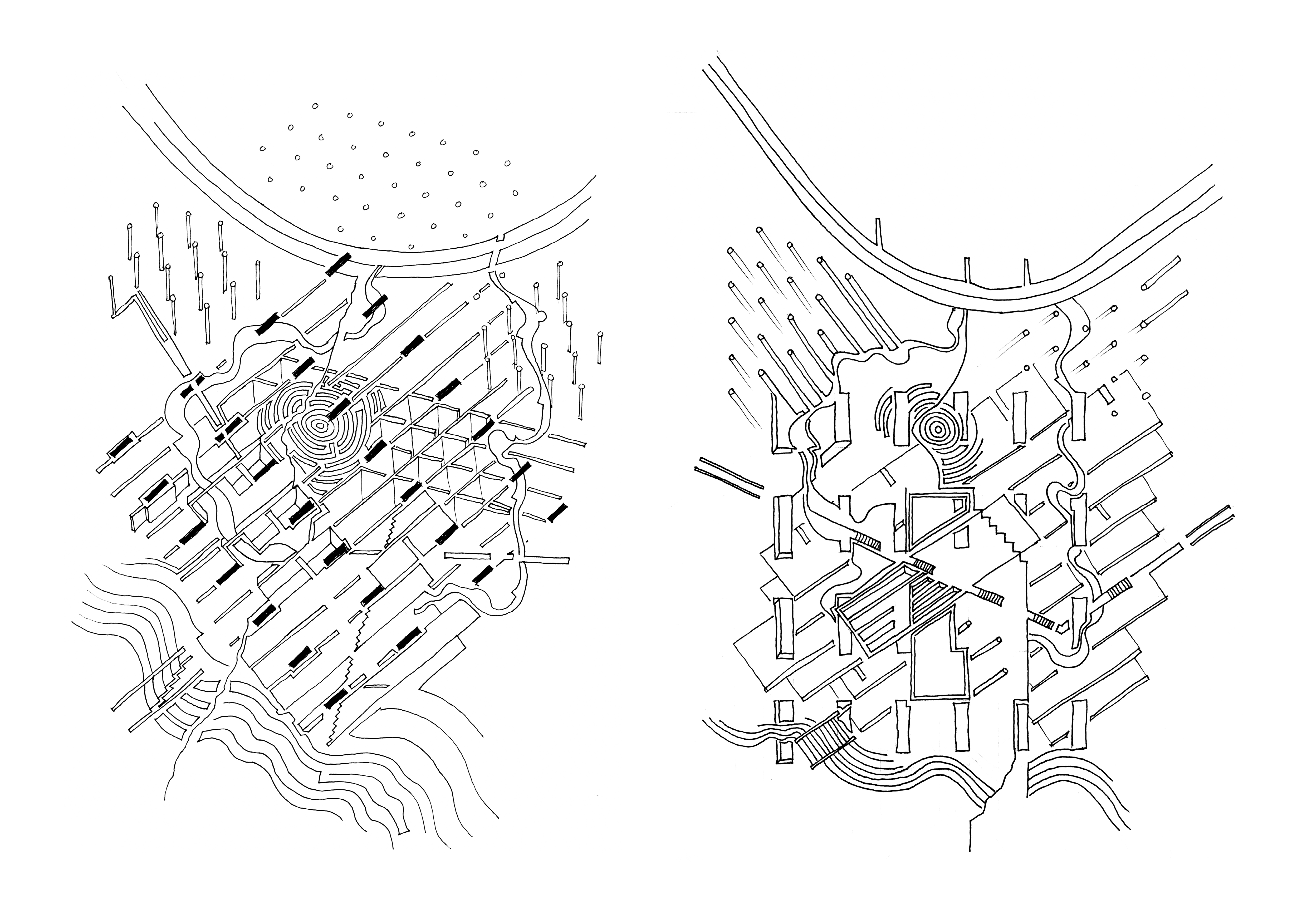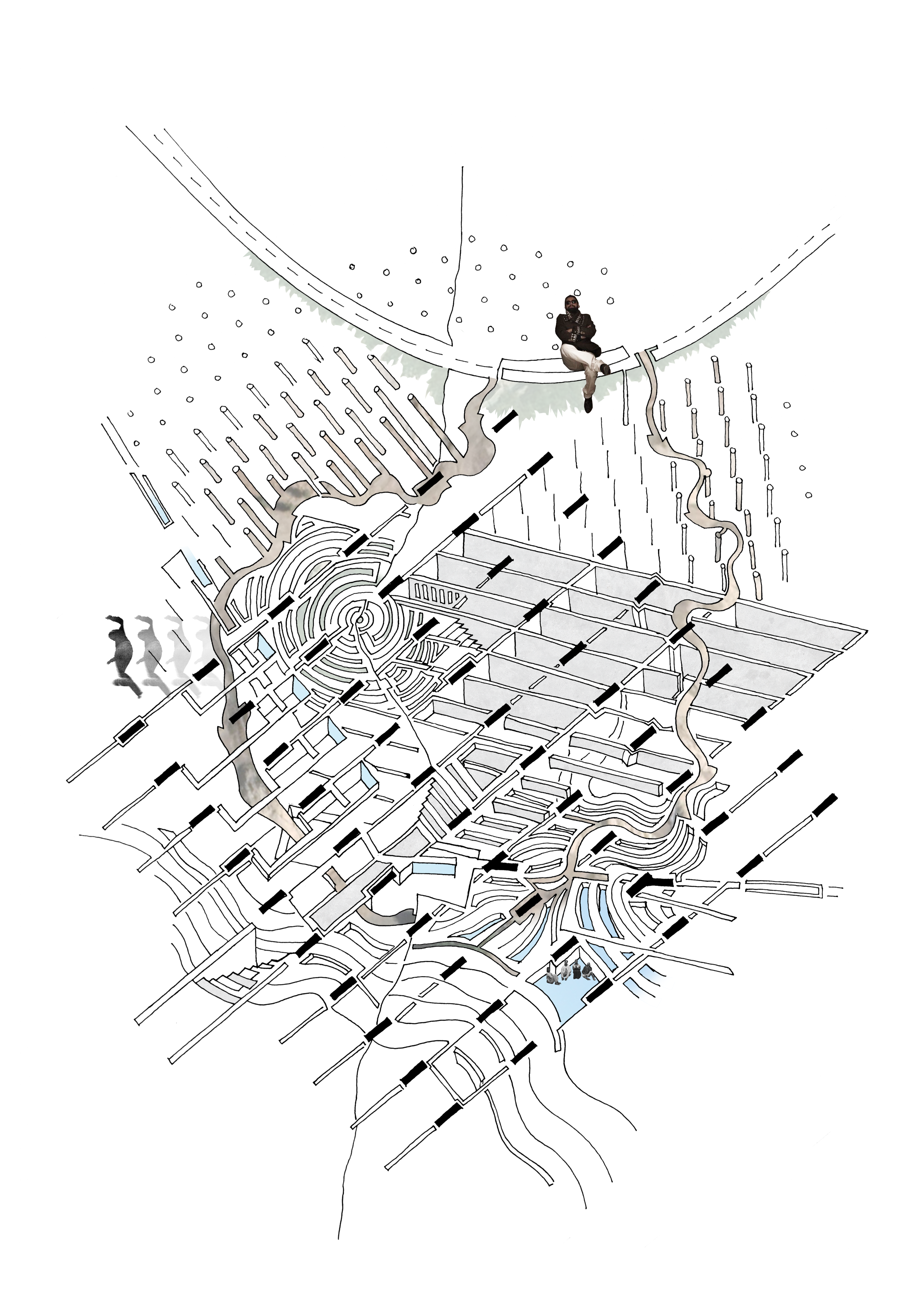SITE I – HIDDEN
Jesse Verdoes
The first site is located next to the main waste dump of the city and characterized as a flat terrain surrounded by rocky hills that obscure its visibility from the highway. Because of this seclusion, it was formerly used as a burial place of the Baha’i: a persecuted minority in Iran. Their cemetery was originally situated in a neighborhood within the city, but was forcefully displaced to this hidden site by the municipality during the Islamic revolution. Recently they are asked to move again, as the greenified area is now becoming a popular picknick place in the shadows of the trees. The hidden site has become a disturbed cemetery, accessible via a route that takes the visitor through a micro-landscape.
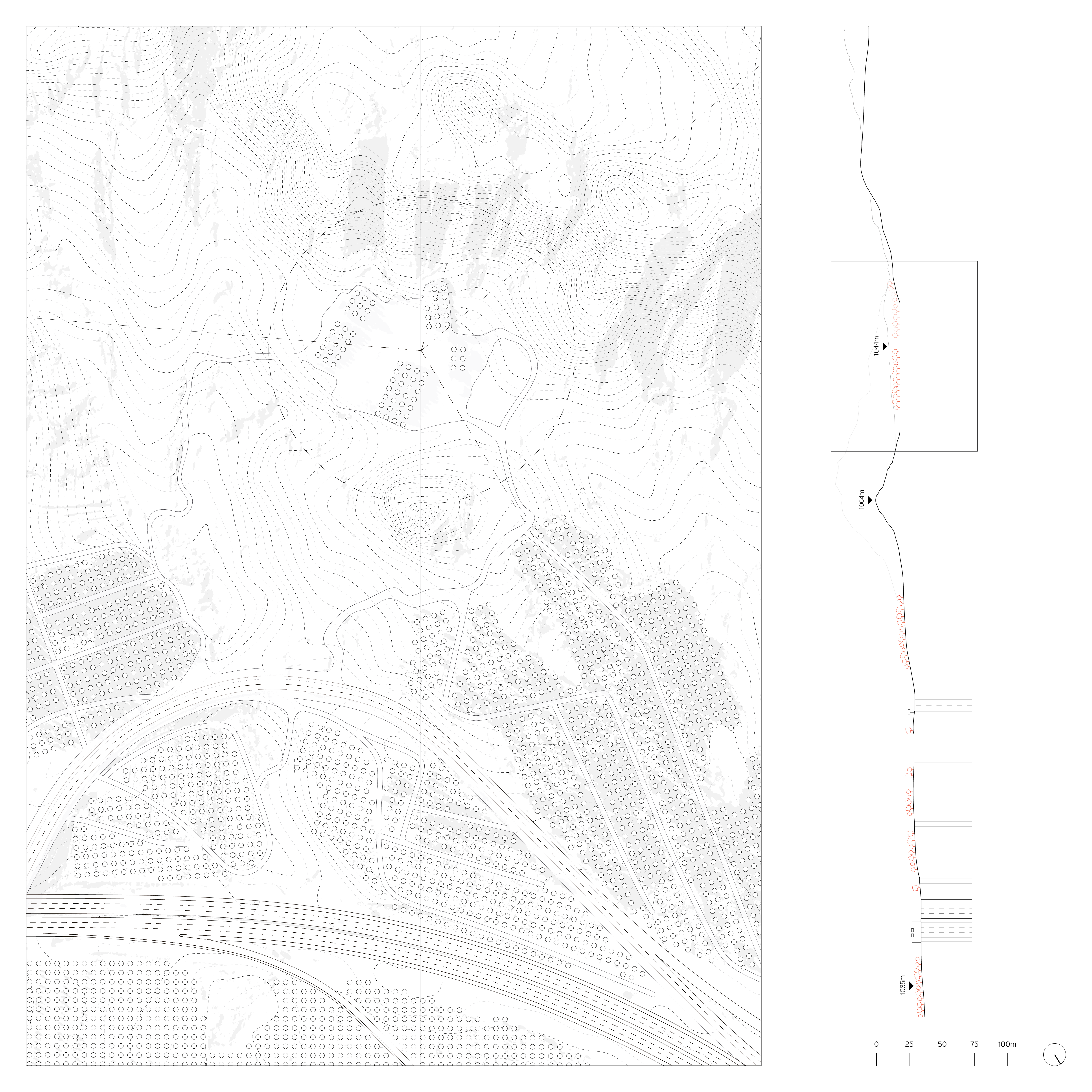
Architecture of Death
The analysis of the architecture of death has resulted in the distinction of three understandings:
1. The architecture of death is a manipulation of topography
A sequence of aerial photographs of one of the plots of the Behesht-e Reza Cemetery reveals the manipulation of terrain by different operations: after excavation, the plot is filled in by a grid of brick or concrete grave units directed towards mecca, that is subsequently filled with bodies and finally covered by horizontal gravestones.
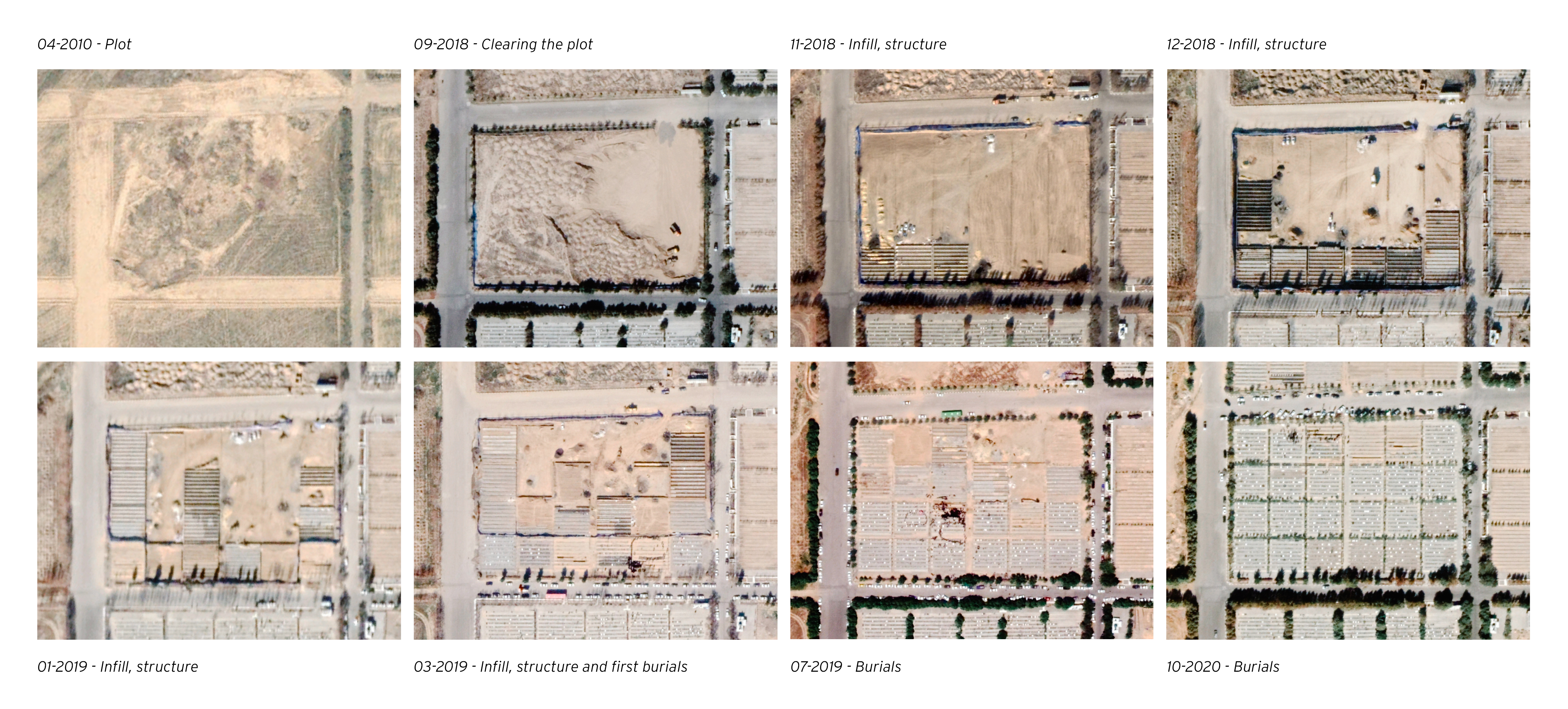
2. The architecture of death is based on a standardized measurement system
The burial ritual is analyzed by superimposing its different stages around the dead body, showing the standardization of the process based on the measurements of the human body.
3. The architecture of death is the framing of decay
Comparable to the way garbage is dumped on the landfill, bodies are disposed of in the grids of the graveyard. Both can affect water pollution and are thus situated on the outskirts of the city. The singular grave unit as a frame for decay is researched by observing the process of decaying mandarin: while the mandarin slowly disappears, the liquid substance is the only element that ignores the frame as it seeps into the cardboard.
Complexity Drawing

